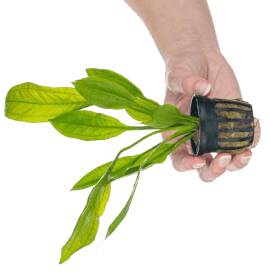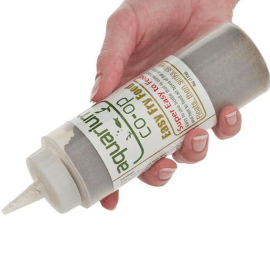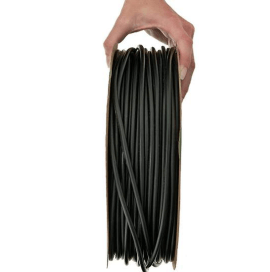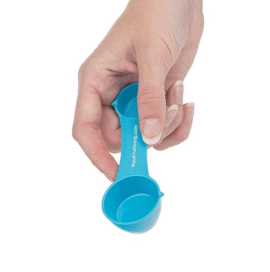Care Guide for Cherry Shrimp — Tank Setup, Food, and Breeding
The aquarium hobby is crazy about Neocaridina cherry shrimp and for good reason too. Not only are they excellent clean-up crew members that eat algae and leftover fish food, but they come in almost every color of the rainbow and are tiny enough to fit in a 2-gallon nano tank. Compared to other types of ornamental shrimp, they are pretty beginner-friendly and can handle a wide range of water parameters. Finally, these adorable critters are very easy to breed and can be sold at local fish stores and aquarium societies. Learn all about the beautiful cherry shrimp and how to keep them healthy and happy.
What are Cherry Shrimp?
Neocaridina davidi is native to China and Taiwan and normally has a translucent body covered in mottled brown speckling that blends in well with its surroundings. Nowadays, there are many color morphs available on the market — such as red, orange, yellow, green jade, blue dream, blue velvet, chocolate, black rose, and rili (or striped). Red is the most popular color, which is why the species is commonly known as “cherry shrimp” or “red cherry shrimp” (RCS). Lots of companies like to label their RCS with special color grades — like sakura red, fire red, painted fire red, and Bloody Mary — but the quality level is very subjective. The best way to judge color is to visit your local fish store or breeder in person and pick the shrimp that look the best to you.
How do you tell a male cherry shrimp from a female? Females are the larger of the two sexes, can grow up to 1.5 inches (4 cm), and display very bright and vivid colors. In adulthood, the female either has a yellow, saddle-like shape at her back (which are unfertilized eggs in the ovaries) or is “berried” and carries fertilized eggs in the swimmerets underneath her tail. Males are a bit smaller at 1–1.25 inches (2.5–3 cm), have a slimmer tail, and are more translucent in color. Juveniles are hard to sex since they all look slender and less colorful than the adults.

Male (top) and female (bottom) orange sakura shrimp
How to Set Up an Aquarium for Cherry Shrimp
As mentioned before, Neocaridina shrimp can fit in tiny tanks, but we prefer to use a 10-gallon tank or larger for the purposes of setting up a healthy breeding colony. Ideally, put them in a mature tank that has been running for many months so that it’s chock full of microfauna and mulm for them to graze on. Also, use a sponge filter or cover the filter input with a pre-filter sponge to ensure that no baby shrimp accidentally get sucked up.
Shrimp have a hard, outer structure called an exoskeleton and must regularly molt whenever they outgrow their previous “skin.” In order to make the new exoskeleton, they prefer water with pH levels of 6.5–8.5, GH of at least 6° (110 ppm), and KH of at least 2° (40 ppm). If you have soft water, make sure to add mineral supplements to prevent failed molts (sometimes called the “white ring of death” when a dead shrimp has a white band or gap behind its head). Crushed coral helps to increase KH, while Wonder Shell and Seachem Equilibrium boosts GH. Feeding foods rich in calcium and other minerals also helps with healthy molting, which we will discuss in the next section.
After a shrimp molts, its new exoskeleton is fairly soft, so during this time of vulnerability, the shrimp will hide until the new shell hardens. Provide lots of live aquarium plants, shrimp caves, and other shelter for them to seek cover. Dense plants like mosses also tend to grow algae and biofilm, which cherry shrimp love to forage on.

Freshly molted exoskeleton of a shrimp
Is my cherry shrimp dead or molting? A shrimp molt is clear translucent with a split in the middle of the back, whereas a deceased shrimp is fully opaque in color. Many hobbyists like to leave the old exoskeleton in the aquarium because the shrimp will consume it to gain extra calcium for their next molt.
Do cherry shrimp need a heater? Neocaridina davidi can easily live in temperatures between 60–82°F (16–28°C), so in most cases, you can put them in an unheated aquarium. However, they are most comfortable at 72–76°F (22–24°C), so if your room temperature is below that range and you want to maximize their reproduction, you may want to consider getting a heater. Temperature greatly affects their metabolism, meaning that (1) they grow faster but have shorter life spans at higher temperatures and (2) they live longer but breed less at lower temperatures.
How many cherry shrimp should be kept together? If you plan on starting a breeding colony, get at least 10 Neocaridina shrimp. This number should guarantee you have both males and females. That being said, do not only pick the biggest, most colorful shrimp at the store because they might all be females or might be too old to breed for much longer.
What fish can be kept with cherry shrimp? Almost all fish will eat baby shrimp, so if you are focused optimal breeding conditions, then keep them in a species-only tank that only contains cherry shrimp. If you primarily want to keep adult shrimp and do not care about how many young are produced, then certain peaceful, small species can do well as tank mates. We have successfully kept them with other dwarf shrimp, snails, otocinclus catfish, chili rasboras, and other nano fish. For a more in-depth discussion on appropriate tank mates, read the full article here.

Red cherry shrimp in a community tank with guppies and neon tetras
What do Cherry Shrimp Eat?
As detritivores, they are constantly scavenging for algae, decaying animal and plant matter, biofilm, and other edible organics. They will happily eat any kind of community fish food that is dropped in the tank, but make sure to also feed them shrimp-specific foods like Hikari Shrimp Cuisine and Xtreme Shrimpee Sinking Sticks because they are enriched with calcium and other minerals to help with molting. Repashy gel food and vegetables like blanched zucchini are also good for long-term grazing because they tend to stay water stable for greater periods. While shrimp have the reputation of eating mostly algae and plant matter, make sure to include enough protein in their diet because the juveniles need it for growing and the females use it to make eggs.
Baby shrimp, especially during the newborn phase, do not move as much and can easily get outcompeted for food. Therefore, give the little ones a variety of powdered foods — such as Hikari First Bites, Easy Fry and Small Fish Food, and Bacter AE — that will drift towards them. Aquatic botanicals like catappa leaves and cholla wood break down quickly and grow a layer of biofilm that is an excellent source of food for both young and adult shrimp. For more information, learn about our 7 favorite foods for freshwater shrimp.

Berried female blue dream shrimp grazing on sinking food
How to Breed Cherry Shrimp
Dwarf shrimp reproduce very easily because females can carry about 20–30 eggs at a time and the adults do not predate on their own young. Just make sure to have shrimp of both sexes, feed lots of good food, and remove any predators that may eat the babies. When a female has molted and is ready for spawning, she releases pheromones to signify her availability, and all the male adults swim around in a frenzy looking for her. After mating, the female becomes berried and carries the eggs underneath her tail for about a month, depending on the water temperature. She uses her swimming legs to fan fresh water over the eggs and clean them to prevent fungal or bacterial growth. When the babies hatch, they look like exact replicas of the adult shrimp, but less colorful and only 1/16 inch (2 mm) in length. As mentioned before, feed them powdered foods and catappa leaves, and they will soon grow big enough to eat regular shrimp foods.
If you notice that the shrimp have stopped breeding, sometimes it can mean that the population of the colony has reached its maximum capacity for the amount of food you are feeding. Your choices are to feed more food (and perhaps upgrade the tank size) or move some shrimp out. Cherry shrimp are always in high demand, so try selling them to your local fish store or aquarium society to help supplement your hobby’s expenses.
How do you make redder cherry shrimp? Once the population has grown to a healthy size, consider culling or removing the shrimp that are less colorful. This practice ensures that only the shrimp with the brightest reds (or other color) get to pass on their traits to the next generation, creating new batches of hopefully even redder shrimplets. Without culling, shrimp populations often degrade in appearance and value over time, so all serious breeders carefully comb through their colonies to develop higher grade shrimp.
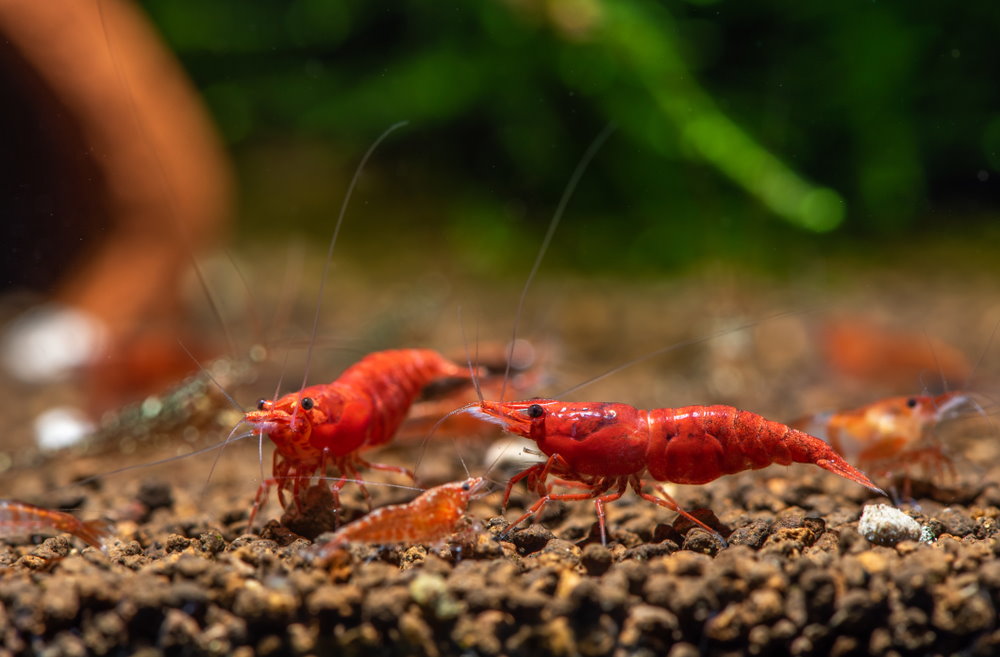
Baby shrimp are look like miniature versions of the adults
If you are looking for high-quality Neocaridina shrimp to start your breeding colony, check out our list of preferred online retailers to see all the colors they have in stock. Best of luck with your cherry shrimp and enjoy nature daily!
